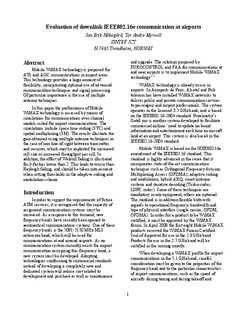Evaluation of Downlink IEEE802.16e Communication at Airports
Chapter
Permanent lenke
http://hdl.handle.net/11250/2431753Utgivelsesdato
2008Metadata
Vis full innførselSamlinger
- Publikasjoner fra CRIStin - SINTEF AS [5801]
- SINTEF Digital [2501]
Originalversjon
Integrated Communications, Navigations and Surveillance Conference 2008, ICNS 2008, Bethesda 5-7 May, 2008Sammendrag
Mobile WiMAX technology is proposed for ATS and AOC communications in airport areas. This technology provides a large amount of flexibility, incorporating optional use of advanced communication techniques and signal processing. Of particular importance is the use of multiple antenna techniques. In this paper the performance of Mobile WiMAX technology is assessed by means of simulations for communications over channel models suited for airport communications. The simulations include space time coding (STC) and spatial multiplexing (SM). The results illustrate the gain obtained using multiple antenna techniques in the case of non line-of-sight between transmitter and receiver, which may be exploited for increased cell size or increased throughput per cell. In addition, the effect of Weibull fading is illustrated for b-factors lower than 2. This leads to worse than Rayleigh fading, and should be taken into account when setting thresholds in the adaptive coding and modulation scheme. Evaluation of Downlink IEEE802.16e Communication at Airports
